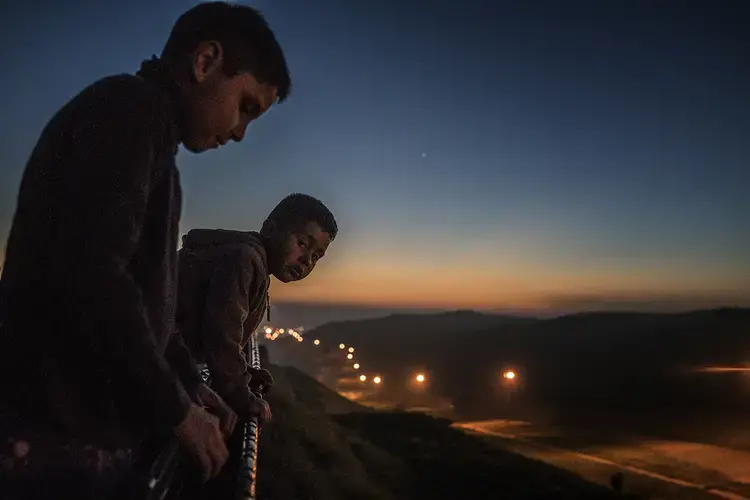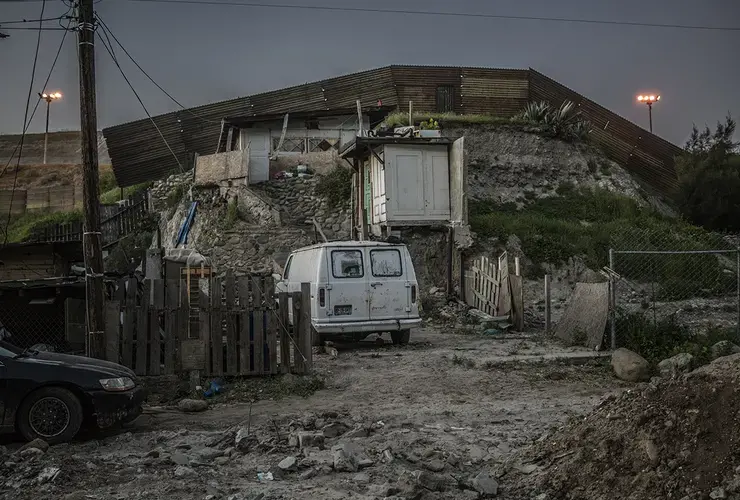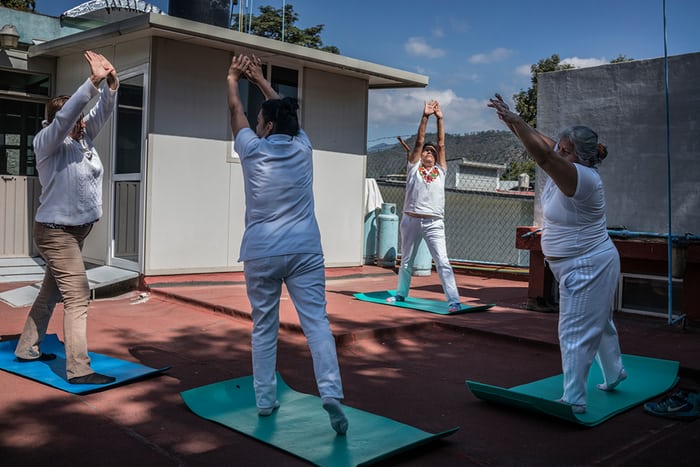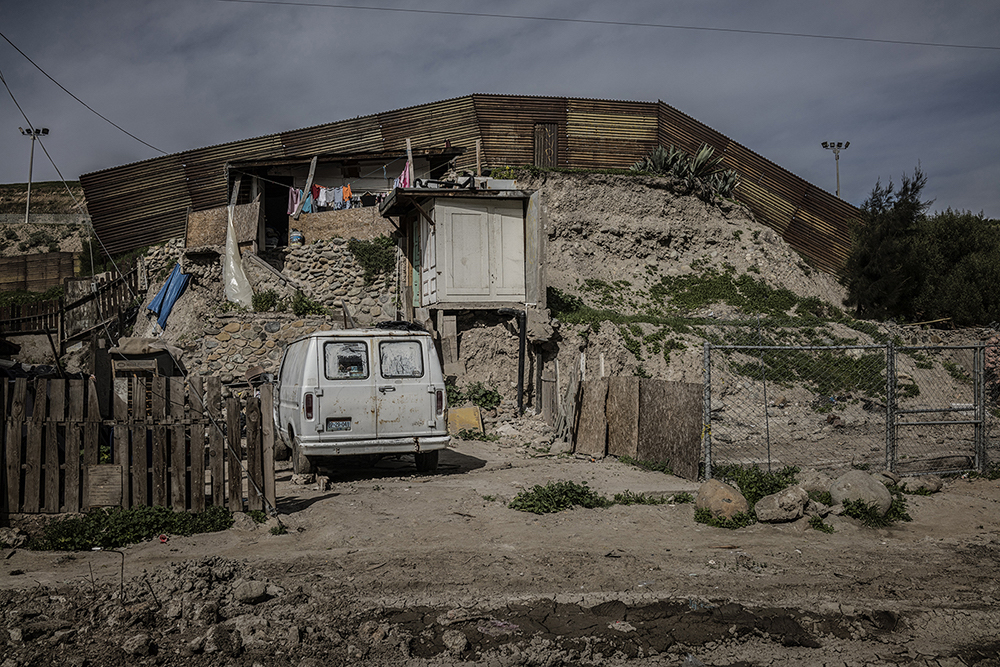
It was necessary to ascend a steep slope, sometimes on all fours, next to a gap in the newer, second border wall/fence, frequented by “coyote” traffickers, to reach the mesa-top where three deportees live. Luis lived for almost 20 years in the United States doing agricultural work in California. Three of his children, born in the United States and U.S. citizens, and his wife still live in United States. Luis occasionally earns US$5/day collecting shopping carts for a supermarket nearby and lives atop this hill because he feels safe. Climbing up to his mesa-top lair, however, I would soon learn that it is not always possible to avoid trouble.

The Arias family is led by Estel, the boys’ grandmother and matriarch of the clan. Their house actually rests up against the border wall and yet the family expressed no fear of human or drug traffickers. Still their home, despite being millimeters from the world’s superpower, lacks running water and necessitates an outhouse. They’ve had to illegally tap into the power grid because they cannot afford to pay for electricity.
I happened upon their home on a previous reporting trip, one month ago, and was struck by strength of this family living in extreme poverty, through tutelage of the family matriarch. The family not only worries what a new, bigger wall might mean but they also speak about a plan to build a highway connecting the airport to their east with the main port of entry at San Ysidro, to the west right next to this wall.

There is a gap in the second, stronger wall on the U.S. side, offering an opportunity to traffickers of people and drugs about 1 1Ž2 miles from the Pacific Ocean. On the U.S. side, there is a state park parking area, which could serve as a rendezvous to traffickers’ partners on the U.S. side of this heavily-surveilled stretch of the border.
In order to document deportees who live atop this hilltop, it was necessary to climb the steep slope from the highway below, entering territory controlled by “coyotes” who work for Mexican cartels that control the flow of people and drugs across the border.
The man in this photo is attempting to obscure his identity—he subsequently confronted me because I had a camera. I was able to calm him by mentioning, by name, one of the deportees I had met for the first time two days before on this hilltop. The deportees showed me a safer route down so that I could avoid this route when I descended to the highway again.

In one of the strange quirks of topography along the border, on the left side of the frame, the wall veers into the United States allowing Mexican families to have gardens that are actually in the United States.
This neighborhood is less secure than where the Arias family live—up the hills. Families protect their homes with large dogs, often pit bulls or pit bull mixes.

Education Resource
Meet the Journalist: James Whitlow Delano
Mexico has the distinction of co-mingling of obesity and malnutrition–the OECD ranked Mexico as...








